Blog
The Power Of Forgiveness – Part 2

It is important to note that this blog entry is the second part of a series in which we discuss the power of forgiveness. If you’ve not already done so, we suggest that you read the first part, as it will provide information about what forgiveness means, why you would need forgiveness, and who should be forgiven. Please click here to view that post: [Link]
What does the process of forgiveness entail?
Dealing with past traumas that have caused deep emotional pain can take some time to fully resolve. While there is considerable subjectivity regarding the actual process of forgiveness, there are some basic guidelines that can be followed to help those who would like to find peace and move on with their lives.
The first step of forgiveness is to understand why it is necessary and how it can benefit you. It is important to take some time to think about how this tool can improve your life. Try to envision the possible outcomes if you were to forgive yourself, forgive the person who hurt you, and then move forward—leaving the trauma in the past.
The second step is to clearly understand what needs to be forgiven. This step is vital, as it helps to provide clarity as to what has transpired and how you feel about it. Quite often it’s easier to forget the details surrounding the trauma and just remember who or what hurt you. It is vital that you take the time to sit still and think about the exact action(s) and people that you want to forgive. Some people find it helpful to talk to a confidant about their feelings—verbally exploring the past situation to help gain clarity.
The third step of forgiveness is to find ways of letting go of the past trauma. We want to strongly emphasize that the process of letting go does not mean you are condoning what has happened to you and how you felt about it. Rather, it means you are seeking methods that will allow you to leave the emotions surrounding the event in the past. There is a lot of subjectivity when finding a way to let go, as each person needs to use a method that feels right and will allow him or her to forgive fully. Some people find that writing helps with this step as it puts their feelings on paper for them to see and read. Other people find that talking to a loved one or a professional is useful; perhaps they feel the need to orally explore the process and develop a plan on how to let go. There are other more creative methods, so it’s important that you use what feels best and most effective.
The fourth step is to move on with your life. A helpful analogy is to consider your past traumas as old, heavy baggage that you’ve been carrying around with you. Now that you have used the powerful tool of forgiveness to let go of the pain, it is time to stop lugging around those bags filled with memories that no longer serve you. Find the strength from within to move on. No one can do it for you. And when you are able to move on, you will have accomplished something very worthwhile and meaningful.
These four steps might seem trivial to some people who are carrying a lot of hurt and pain. Our goal is to provide a basic outline to assist anyone interested in using forgiveness to obtain freedom from past emotional trauma. Forgiveness is truly a gift we give ourselves; it is for our own benefit—enabling us to let go and move forward with our lives.









